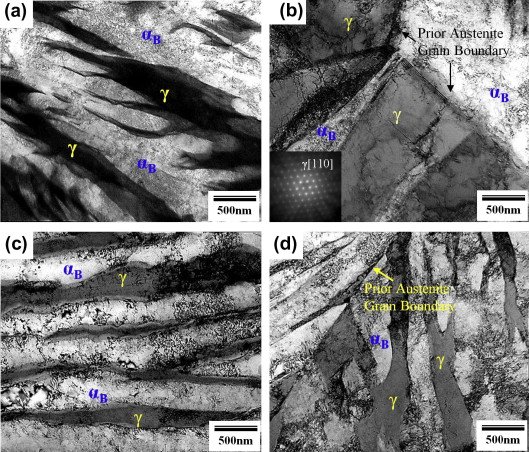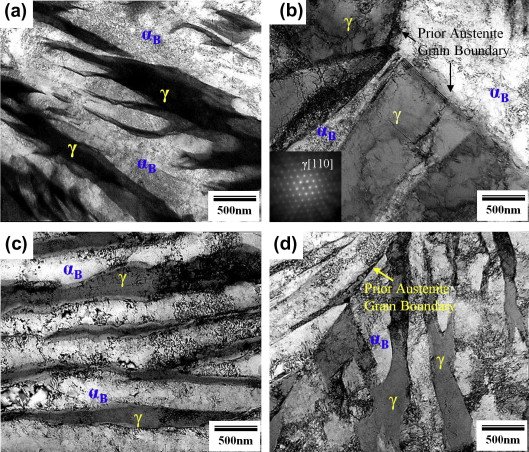Atomic scale effects of alloying, partitioning, solute drag and austempering on the mechanical properties of high-carbon bainitic–austenitic TRIP steels
Understanding alloying and thermal processing at an atomic scale is essential for the optimal design of high-carbon (0.71 wt.%) bainitic–austenitic transformation-induced plasticity (TRIP) steels. We investigate the influence of the austempering temperature, chemical composition (especially the Si:Al ratio) and partitioning on the nanostructure and mechanical behavior of these steels by atom probe tomography.
The effects of the austempering temperature and of Si and Al on the compositional gradients across the phase boundaries between retained austenite and bainitic ferrite are studied. We observe that controlling these parameters (i.e. Si, Al content and austempering temperature) can be used to tune the stability of the retained austenite and hence the mechanical behavior of these steels. We also study the atomic scale redistribution of Mn and Si at the bainitic ferrite/austenite interface. The observations suggest that either para-equilibrium or local equilibrium-negligible partitioning conditions prevail depending on the Si:Al ratio during bainite transformation.

